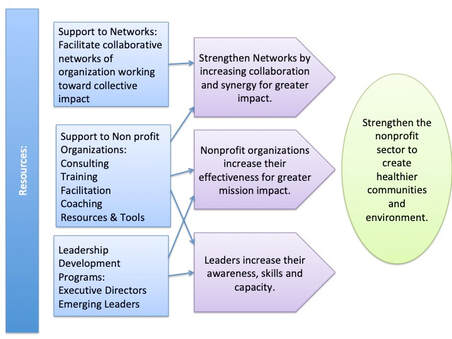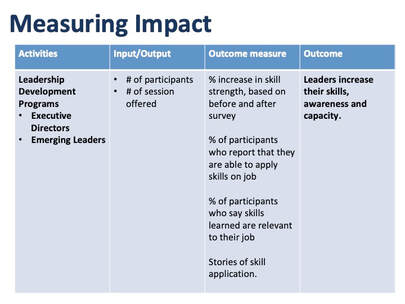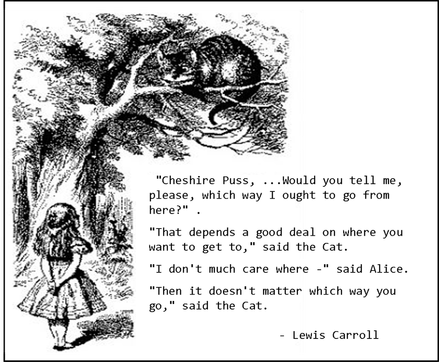Mission: Impact podcast & blog
Build a better world without becoming a martyr to your nonprofit cause
Listen on:
 Photo by El Gringo, Miami Habitat for Humanity Photo by El Gringo, Miami Habitat for Humanity Your nonprofit organization is designed for a specific mission with the goal of having an impact in the world. The world will be different in some way because of the work you do. Homeless people are cared for and fed who wouldn’t be otherwise. First generation college students increase their understanding of financial aid so that they can make better decisions about paying for their education. They’d make costly mistakes without you. Emerging leaders in marginalized communities are supported to strengthen their self-awareness and skills so that they can advocate for their community. You undertake the activities and programs with the aim of furthering your mission. Have you taken the time to look at how all the pieces fit together and whether it all adds up? Creating a picture A sample impact map of a capacity building organization. A sample impact map of a capacity building organization. When you create an impact map also known as a logic model, you create a visual representation of what your organization is doing and how it creates the impact you want to have in the world. It makes clear how you leverage resources and organizational capacities to deliver your core strategies to achieve tangible results. By creating an impact map, you are able to create a model that illustrates your beliefs about the change you are trying to make. Identifying assumptions Sample outcomes and indicators. Sample outcomes and indicators. It also can help you uncover the assumptions inherent in your programs and activities. You can also describe what short, medium and long term outcomes you believe result from each program or activity. A good question for identifying assumptions is to ask, “what has to be true for this outcome to happen?” These essentially are the hypotheses embedded in your program design. Are there gaps in logic? Are you measuring inputs and outputs or outcomes? Are you measuring inputs and outputs or outcomes? Once you have created your map and identified the assumptions inherent with each program, you can consider how you might measure whether you are having the mission impact you are aiming for. An impact map can also uncover gaps in your logic. Creating shared understandingEngaging in the process of impact mapping can be a useful exercise for staff and/or your board. Have small groups create an impact map of your organization. Then compare the maps. Do people envision the same organization? Where are the gaps in knowledge and understanding?
Once you have agreement on your organization’s impact map, take it one step further. Have a conversation about the implications of the map. Ask questions such as:
Think this might be helpful for your organization and would like some help? Inquire about a coaching session.  Photo by Christina Morillo from Pexels Photo by Christina Morillo from Pexels Once upon a time there was a boss at a national nonprofit who wanted to be everyone’s friend. As he tried to be nice, he was indirect in his communication. He wanted everyone to feel like they were on equal footing. He rarely gave direction. Unfortunately for the boss, this left his team members frustrated rather than happy. He actually did have specific ideas about how he wanted certain things done. But team members would not find this out until after they had invested a fair amount into the project. How far can I go? Clarity in scope and purpose would have helped this situation a lot. As a manager, you will frequently hear the recommendation to delegate. When you delegate tasks or projects to your team are you clear how far they can go? Do they know the parameters they are working within? Or are you erring on the side of Mr. Nice Guy. Clarity helps build trust I am certainly not advocating being a jerk. But without clarity, team members may invest a lot of time pursuing an approach that you are not happy with. Alternatively they may be asking for your direction and input in a case where you do not have strong feelings about an approach. Or you may have sought input and were going to make the final decision but your team got the impression that they would be part of the decision making as well. Each of these instances can create frustration and breed mistrust. Delegation continuum A useful tool for thinking about this issue is Tannenbaum and Schmidt’s delegation continuum. There could be a step beyond the end of ‘subordinate-centered leadership’ in which the boss defines the end goal and asks the team to define the parameters and scope of the project. Try it with your team Have a discussion with your team. Where do you usually fall on the continuum? In what instances do they find the scope of the delegation confusing or unclear? What could bring more clarity to those instances? Project CharterWhen you are delegating a larger project, working with the team to create a project charter can help the group start with greater certainty. This charter should include project goals, roles and responsibilities, timelines, budget. The team should also spend time as they get started talking about how they will work together, how they will make decisions and what skills and talents each person brings to the team. Lacking shared understanding So often the challenges at work come down to the lack of shared understanding. How can you use these tools to bring greater shared understanding to how your team and your direct reports work together?
Having team challenges? Inquire about a free coaching call. The primary mistake that nonprofit organizations make in strategic planning is failing to fully engage their constituents to get buy in to the plan. “Getting buy in” too often takes on the meaning of, “I have told you what I want and what we will be doing” and then I assume because I have ‘communicated’ that to you, you are by definition ‘bought in.’ I write more extensively about this mistake in this blog post. Other mistakes include a plan that is based on anecdotes rather than data as well as a plan that is not truly grounded in reality. Anecdotes rather than data  How are you integrating reliable data into your process? When you are doing your scan of the external environment, are you just relying on the observations of those in the room at the planning retreat, or are you doing some searching for research on current trends in your field? Think about asking 1-2 people working on your strategic plan to gather reports and research, summarize it and share it with the larger group. What data do you already have available about your organization? And how are you using it to inform your thinking? What data is missing? How can you gather it? Your up front data gathering with constituents that could include interviews, focus groups and/or surveys will also give you a wider and more grounded view. Be aware of not letting your thinking be swayed by the most recent member/constituent conversation you have had. Pie in Sky Planning Organizations usually look for ways to stretch themselves and set ambitious goals during a strategic planning process. But when it is going too far? When your strategic planning group gets caught up in grand visions, the plan can have little connection to reality. Have you considered what it will take to get from here to your vision? Does the plan just add new things? Have you made decisions about what you are going to stop? When your goals are so lofty or such a departure from what you are currently doing, the plan is likely to end up just talk.
Ground your thinking in research and data, create stretch goals that are also realistic to achieve. These leading practices will help ensure that your plan will be put into action rather than just sitting on the shelf. Thinking of engaging in a strategic planning process with your organization and want to learn more? Get in touch with me for a complementary coaching session. Some have argued that strategic planning is dead. They argue that the world moves too fast and changes too quickly to make planning meaningful. In today’s “VUCA” – volatile, uncertain, complex and ambiguous – a world characterized by disruption - you just cannot plan for the future. They point out that the practice of long-term planning rose to the forefront during the 50s and 60s when the rate of change was slower. Reactivity  Certainly the rate of change may seem dizzying today. Or perhaps it is the rate and volume of information coming at us that makes it seem like everything is moving too fast (but that is another topic altogether). Yet I would contend that without planning–especially longer term strategic planning or strategic thinking—you leave your organization prone to either business as usual or staying caught in a cycle of reactivity. Predicting the Future? Strategic planning does not enable you to predict the future. I think there is a hidden assumption that in order to do strategic planning effectively you have to somehow know the future. This trips people up. Even futurists cannot accurately predict the future though they spend their professional lives watching trends and making educated guesses. What is strategic planning? I like Allison and Kaye’s definition: “A systematic process through which an organization agrees on and builds key stakeholder commitment to priorities that are essential to its mission and responsive to the organizational environment.” Taking Stock Engaging in the process does enable your organization to step back, consider where you are, where you have been and set some intentions about where you want to head next. Eighty five percent of organizations say that they engage in some sort of strategic planning on a regular basis. It enables you to think about some possible futures and then make decisions about which you would like to see materialize. It does not, obviously, guarantee that you will make it all happen. Setting Intentions & Staying Flexible With flexibility built into both the plan and the process, investing the time in strategic planning sets up your organization for success. By taking stock of both external trends and internal capacities, then setting targets for how you will proactively work towards your mission, you take charge of your future. At the same time, remembering that a plan is just that – a plan – and you will need to adjust it as circumstances change. Using the process as an opportunity to define criteria for how you will make decisions about future strategic opportunities and challenges, you will be better prepared when unexpected things pop up.
Thinking of engaging in a strategic planning process with your organization and want to learn more? Get in touch with me for a complementary coaching session. |
Archives
May 2024

Grace Social Sector Consulting, LLC, owns the copyright in and to all content in and transcripts of the Mission: Impact podcast, as well as the Mission: Impact blog with all rights reserved, including right of publicity.
|
Telephone301-857-9335
|
info[at]gracesocialsector.com
|
Grace Social Sector Consulting, LLC, owns the copyright in and to all content in, including transcripts and audio of the Mission: Impact podcast and all content on this website, with all rights reserved, including right of publicity.
|